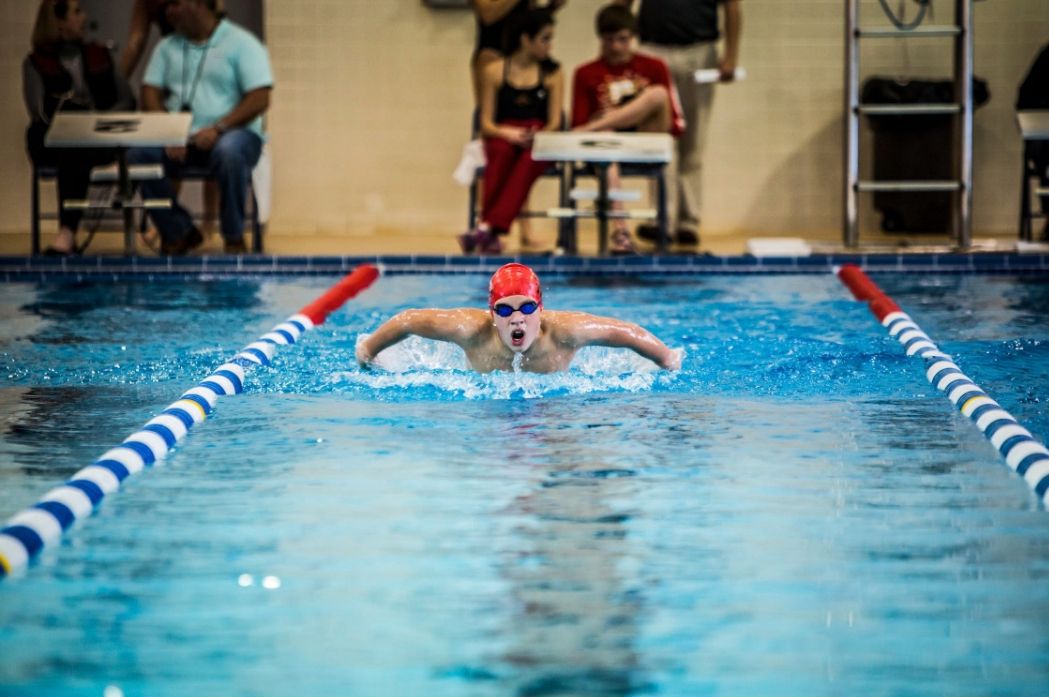

Earplugs, goggles, and swimming caps - are they really necessary?

You’ve got your swimming costume on. The towel’s ready to go for when you’re done. Is there anything else you’re missing?Yes, there is! Today, we’re talking about swimming equipment. When you’re new to swimming, it’s not always clear what’s necessary. But, in all honesty, it comes down to your personal preferences, what type of swimming you do, and what makes you the most comfortable. Let’s dive in.
Are Goggles Necessary?
Plenty of people learn to swim without the use of goggles. If you’re just splashing about at the pool or enjoying time at the beach, goggles can be unnecessary. If you want to have a nosey underwater we won’t stop you, though.
However, in competitive swimming, goggles are definitely recommended. When swimming in a pool, the chlorine in the water can irritate your eyes if you have them open underwater. With goggles, you can swim for hours at a time without developing sore and dry eyes with clear vision. The same goes for open water swimming. It’s more important than ever to see clearly, know what obstacles are coming your way, and spot your mark on land to ensure you’re swimming in the right direction. Goggles are a must for serious and regular swimmers.
However, for those just learning to swim, especially children, it’s often advisable to start without goggles.
This way, you learn to open your eyes underwater - useful if you ever find yourself in a dangerous situation where you need to swim without goggles.
Are Earplugs Necessary For Swimming?
Earplugs aren’t as common as goggles for swimming, however, they’re just as useful and can prevent infection. Swimmer’s ear is a common ear infection caused by water remaining in the outer ear canal.
It creates a moist environment, perfect for bacterial growth, resulting in irritating and painful infections. When you get swimmer’s ear, the treatment often involves over-the-counter pain relief, applying heat, and avoiding water exposure. If you’re a professional, this can interfere with your training schedule.
These days, you can get earplugs with waterproof speakers so you can listen to music while you do your laps, without having to rely on the lifeguard’s questionable music choices.
It’s better to prevent swimmer's ear by wearing earplugs if you’re a frequent swimmer.
However, less frequent swimmers may be fine without them. Just double-check you don’t have any water in your ears when you get out of the pool.
Are Swimming caps Necessary?
Swimming caps promote good hygiene in pools. Some pools, especially across Europe, require swimmers to wear swimming caps before they can get in. It stops loose hairs and dirt ending up in the pool. They also help you keep hair dry if you have to shoot off somewhere important after a swimming session or don’t fancy the whole hair-drying routine. At the competitive level, swimming caps help you become more streamlined, ensuring hair doesn’t drag and slow you down. There are only positives to wearing a swimming cap while you swim. Unless you struggle putting them on in which case they’re just the worst!
All swimming accessories come in a variety of sizes so you can ensure you’re comfortable. You can even get many items custom-made if you want a personalised and comfortable product. However, what you choose to wear is ultimately up to you.
At Maru, we produce a large variety of swimming costumes and accessories so you’re spoilt for choice when it comes to your outfit. Whether you’re in the pool, in the open water, or chilling on the beach, our costumes are a vibrant way to look and feel great. Take a look at our range via our website.
